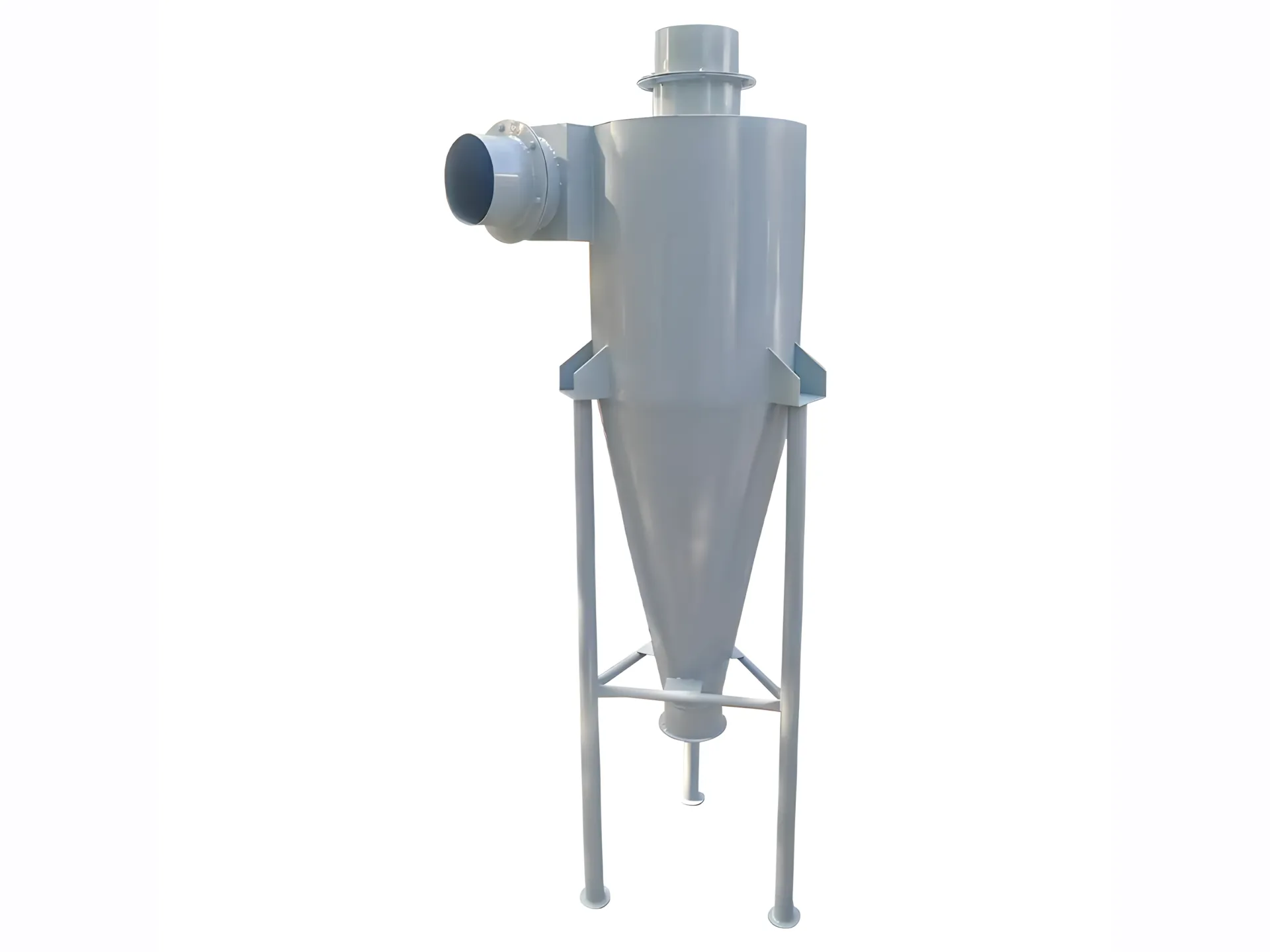Separatori a ciclone nel riciclaggio della plastica: meccanismi chiave e applicazioni
Separatori a ciclone sono fondamentali nel riciclaggio della plastica per selezionare e purificare in modo efficiente i materiali sfruttando le differenze di densità delle particelle, dimensioni e dinamiche del flusso d'aria. Ecco come sono adattati per soddisfare le esigenze specifiche del settore:
1. Ruolo nel riciclaggio della plastica
I cicloni affrontano due sfide principali:
- Rimozione dei contaminanti: Separare polvere, sporcizia, etichette di carta o metalli dai frammenti di plastica sminuzzati.
- Selezione dei materiali: Suddivisione delle plastiche miste (ad esempio PET vs. HDPE) in base alle differenze di densità.
2. Principio di funzionamento (specifico della plastica)
- Iniezione tangenziale del flusso d'aria:La plastica sminuzzata entra nel ciclone, creando una spirale ad alta velocità.
- Selezione centrifuga: I materiali più pesanti/densi (ad esempio PVC, metalli) vengono spinti contro le pareti e cadono nella tramoggia di raccolta.
- Recupero di materiali leggeri: Le plastiche più leggere (ad esempio pellicole PP, polvere) salgono attraverso il vortice interno ed escono attraverso il cercatore di vortici.
- Sistemi multi-stadio: Spesso abbinato a setacci o separatori elettrostatici per una maggiore purezza.
3. Applicazioni chiave
- Pulizia post-triturazione: Rimozione di contaminanti come sabbia o colla dai fiocchi di plastica.
- Linee di Pellettizzazione: Estrazione di polvere e particelle fini durante l'estrusione per migliorare la qualità dei pellet.
- Ordinamento basato sulla densità: Separazione del PET (1,38 g/cm³) dall'HDPE (0,95 g/cm³) in flussi misti.
- Riciclaggio della pellicola: Isolamento di pellicole leggere in LDPE da frammenti rigidi.
4. Vantaggi del riciclaggio della plastica
- Efficienza dei costi: Basso consumo energetico e nessun materiale di consumo (ad esempio filtri).
- Durata: Resiste a plastiche abrasive come ABS o PVC sminuzzati.
- Scalabilità: I design modulari si adattano a impianti di piccole dimensioni o industriali.
- Processo a secco: Riduce il consumo di acqua rispetto agli idrocicloni.
5. Limitazioni e soluzioni
- Sfide simili di densità: Difficoltà a separare il PP (0,9 g/cm³) dal LDPE (0,92 g/cm³).
- Soluzione: Da abbinare a selezionatrici NIR (vicino all'infrarosso) o vasche di flottazione.
- Limiti delle particelle fini: Potrebbe fuoriuscire polvere inferiore a 100 µm.
- Soluzione: Aggiungere filtri a maniche o precipitanti elettrostatici.
6. Considerazioni sulla progettazione
- Ottimizzazione della velocità di ingresso: Bilancia l'efficienza di separazione (15–25 m/s) con i costi energetici.
- Geometria della tramoggia: Impedisce alla plastica leggera di rientrare nel flusso d'aria.
- Configurazioni specifiche del materiale:
- Plastica rigida: Cicloni più grandi per flussi di massa.
- Film/Fibre: Cicloni ad alta velocità per prevenire intasamenti.
7. Impatto sul settore
- Miglioramento della purezza: I cicloni migliorano la qualità della plastica riciclata, soddisfacendo gli standard per il riutilizzo a fini alimentari.
- Riduzione dei rifiuti: Recupera 95%+ di materiale utilizzabile, riducendo al minimo la dipendenza dalle discariche.
- Risparmio energetico: Costi operativi inferiori rispetto al lavaggio a umido o alla selezione manuale.
Conclusione
Nel riciclaggio della plastica, i separatori ciclonici sono un difesa di prima linea per la rimozione dei contaminanti e la selezione dei materiali. Sebbene limitati per plastiche fini o con densità simile, la loro semplicità e convenienza li rendono indispensabili nei sistemi di riciclaggio multistadio. L'abbinamento di cicloni con tecnologie avanzate (ad esempio, selezionatrici AI, separazione elettrostatica) garantisce un output ad alta purezza, spingendo in avanti l'economia circolare.



